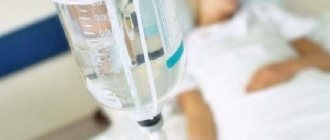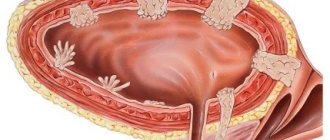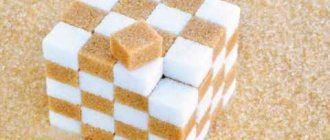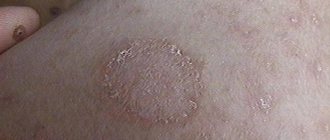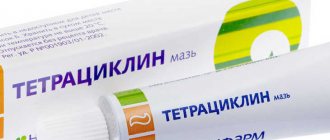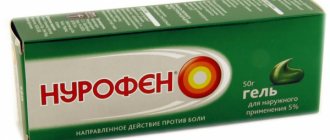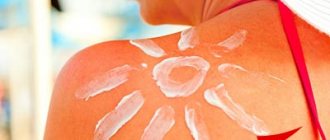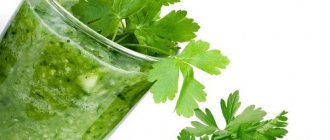Write a review
Reviews: 0
Manufacturers: Vertex, Laboratoires Yves Ponroy (France)
Active ingredients
- Chondroitin sulfate
Disease class
- Arthrosis, unspecified
- Osteocondritis of the spine
Clinical and pharmacological group
- Not indicated. See instructions
Pharmacological action
- Stimulating the regeneration of cartilage tissue
Pharmacological group
- Correctors of bone and cartilage tissue metabolism
Composition of an ointment based on chondroitin
The active component of the composition is a substance called chondroitin sulfate, which is extracted from the cartilage tissue of the trachea of livestock. The main property of this substance is a chondrostimulating and chondroprotective effect, that is, the component is able to participate in the processes of building cartilage tissue, improve metabolism in it, and also protect against degenerative processes.
Among the auxiliary components: anhydrous lanolin, medical petroleum jelly, water and dimethyl sulfoxide. The ointment is produced in the form of a light yellow mass with a medical smell, packaged in standard aluminum tubes of 25 or 30 grams.
Component action
Chondroitin is a drug that has powerful protective effects. It is based on sodium chondroitin sulfate and glucosamine hydrochloride. The product stops the degenerative processes occurring in bone tissue and also accelerates the synthesis of connective tissue. This promotes more active production of collagen, hyaluronic acid, and proteoglycans. Chondroitin also promotes greater production of hyaluronidase and reduces the rate of breakdown of existing hyaluron.
Preparations containing chondroitin help speed up and normalize phosphorus-calcium metabolism.
The drug is actively used in the complex treatment of musculoskeletal diseases; with long-term treatment it promotes powerful pain relief in the affected areas. The active components of the drug are actively absorbed by the tissue, after which they are eliminated from the body naturally in just 24 hours. Most of the active components leave the body naturally.
Pharmacological action of the drug
Due to the peculiarities of its origin and composition, the drug has a positive effect on the condition of joint elements, in particular:
- the processes of calcium and phosphorus metabolism are normalized;
- reduces the activity of bone tissue destruction processes;
- reduces calcium loss by elements of the musculoskeletal system;
- stimulates regeneration processes, promotes joint restoration;
- normalizes the volume of joint fluid production;
- slows down degenerative processes in cartilage.
If the patient has a disease with severe pain, applying the ointment will help reduce its intensity by reducing the inflammatory process. The drug not only helps to cope with the symptoms of ailments, but also significantly improves the mobility of the affected joint elements and fights the phenomenon of morning stiffness.
The effect of chondroitin on the body - final thoughts
- Chondroitin is a natural substance that helps create the cartilage that covers the ends of bones and allows them to glide and move smoothly.
- What is chondroitin sulfate used for? Chondroitin benefits include supporting joint flexibility and lubrication. It promotes post-workout recovery and helps fight inflammation, stiffness and pain. It can be used instead of NSAIDs in patients requiring long-term treatment. It helps in the treatment of pain, including arthritis/osteoarthritis or chronic injuries.
- Glucosamine, chondroitin and MSM are often used together to support joint health. Chondroitin and glucosamine are considered very safe and effective ways to reduce joint pain. Plus they are associated with fewer side effects than most pain medications.
- Most people do not experience side effects from chondroitin. However, some will not notice significant improvement in pain when using these products.
What is the ointment for: indications for use
Taking into account the specifics of the ointment’s effect on the body, the indications for its use are obvious and are represented by the following ailments of the musculoskeletal system:
- arthrosis (wear and deformation of joints);
- osteoarthritis (a degenerative-dystrophic process that affects cartilage tissue);
- osteochondrosis (problems with cartilage in the spinal column);
- osteoporosis (bone disease characterized by increased fragility);
- periodontopathy (diseases affecting the periodontium – the supporting tissue of the tooth).
The product can also be used for bone fractures as a method of accelerating the formation of callus and alleviating the situation. The ointment can be used not only as a treatment, but also as a prophylactic.
Autotransplantation methods
Autologous transplantation is the use of the patient's own tissues and fluids to be introduced into the joint cavity. Nowadays, chondrocytes, progenitor cells from the periosteum and perichondrium, platelet-rich plasma (PRP), and multipotent mesenchymal stem cells (MMSC) are used for this purpose.
In the initial stages, the disease is not diagnosed, since there are no complaints, everything is asymptomatic.
Restoration of cartilage tissue is effective only in the initial stages of osteoarthritis, when bones are not yet involved in the pathological process. Unfortunately, engineering and autotransplantation techniques have not yet made it possible to eliminate bone tissue defects. A person with stage III-IV OA can only benefit from endoprosthetics.
Instructions for use and dosage
The product is intended for external use only. Before applying the ointment, you must thoroughly wash your hands and clean the area that will be treated. Adult patients need to apply the drug in an amount of 1 to 3 centimeters 2-3 times a day with an equal interval between procedures. The composition should be distributed evenly, in a thin layer, and then gently rubbed into the skin. After application, you should immediately wash your hands so that particles of the ointment do not get into your eyes or any mucous membranes. The duration of the therapeutic course is determined by the doctor based on the characteristics of the disease. On average, Chondroitin is used for 2 to 3 weeks daily. Repeating the course is possible only with a second doctor’s prescription.
Before you start using the ointment, it is recommended to check yourself for intolerance. To do this, you will need to apply a small amount of the composition to the skin and wait about an hour - if no changes in the form of burning, redness or rash appear, then the drug can be used. As part of the treatment of diseases of the joints and spine, no negative interaction of the ointment with other elements of the generally accepted treatment regimen was detected, therefore its use is not adjusted based on combination with other medications.
Side effects and contraindications to treatment
In most cases, the ointment in question is well tolerated by patients without causing any negative reactions in them. In rare situations, an allergic reaction with corresponding symptoms has been reported, but such a reaction was a response to individual intolerance to the components of the composition. If an allergic response develops, it is recommended to immediately stop using the product and wash off any remaining residue from the skin. There is no information about cases of overdose.
You will have to discontinue the drug if there are the following contraindications:
- hypersensitivity to the active substance or to any of the components of the product;
- inflammatory process in the application area, which is in the acute phase;
- widespread tissue necrosis;
- excessive granulation in the treated area;
- presence of damage to the integrity of the skin;
- For thrombophlebitis and skin diseases, use the ointment with caution.
Chondroitin during pregnancy and breastfeeding
Despite the fact that the ointment has a local effect and is applied to the skin without damaging the integrity, its use during pregnancy and breastfeeding should be limited. Thus, in such delicate situations, the use of the product is possible only as prescribed by a doctor - in the case where the benefit in a particular situation significantly outweighs the potential harm. The course of therapy should be carried out under the supervision of a specialist and with monitoring of the mother’s own condition and the condition of the child.
Doctors' recommendations
The effectiveness of such drugs is based on the presence of natural components that make up cartilage tissue. Through special treatment, the substances are able to penetrate the skin to the affected bone or joint, exerting their positive effects. Despite the absence of side effects other than allergies, self-prescription of topical ointments is not recommended - such a decision should be made exclusively by a doctor based on a clearly defined diagnosis. It is worth noting that as a therapeutic agent, Chondroitin cannot be used independently, and always acts as an element of complex therapy.
The product can be used in childhood, but with the same caveat - as prescribed by a doctor. Only strict adherence to the instructions and rules for applying the composition will allow you to achieve significant results in treatment.
What is a chondroprotector
Typically, chondroprotectors consist of two main components: glucosamine and chondroitin. Both complement each other well, and therefore they are recommended for use as part of complex therapy for joint diseases. Glucosamine is a monosaccharide, part of chondroitin, under normal conditions it should be produced by cartilage tissue and present in the proper amount in the synovial fluid. With joint diseases, the natural production of glucosamine slows down, and cartilage tissue ceases to repair itself. Chondroitin is a polysaccharide; it is also part of the synovial fluid and promotes the regeneration of cartilage tissue.
According to experts, glucosamine and chondroitin occupy leading positions among second and third generation chondroprotectors.
Chondroitin and glucosamine are found in cartilage, tendons, and skin of fish and animals. Once upon a time, a person was quite content with the beneficial elements that came with food. The lack of these components in the diet of modern people is due to:
- adherence to the principles of a diet in which a person does not eat fish and meat at all (for example, vegetarianism)
- a metabolic disorder in which beneficial elements are simply not absorbed by the body
- low quality products that are virtually devoid of beneficial properties, but contain preservatives, dyes and other additives that aggravate existing health problems
- inability to eat fatty broths, jellied fish and meat, as well as other dishes using bones and cartilage due to the presence of contraindications for other diseases
In this regard, it is recommended to use chondroprotectors - preparations containing glucosamine and chondroitin in finished form. They are much better absorbed by the body, provide cartilage tissue with the required amount of “building material”, without having a negative effect on other organs, without causing negative consequences.
How can you replace Chondroitin: analogues of the drug
It is worth noting that the product is produced by numerous pharmaceutical companies and, despite the same composition and action, may have slightly different names, in particular Chondroitin AKOS, Chondroitin-Forte, 911 with chondroitin, etc. As for drugs with a similar composition and action, when If necessary, Chondroitin ointment can be replaced by the following:
- Khonsurid;
- Chondroxide with chondroitin and non-steroidal anti-inflammatory substance meloxicam;
- Chondrolone.
In general, there are a lot of drugs based on substances from animal joints, and the group of chondroprotectors includes the following products in different forms:
- Don;
- Toad stone;
- Artra;
- Teraflex;
- Rumalon.
The need to select a synonym drug may arise due to the lack of a specific name in the pharmacy or its inappropriate cost, but it is advisable to use a product with another active component only if the prescribed one is intolerant.
Chondroitin: release forms and dosage
As a rule, chondroitin preparations are sold in capsules or tablets, and the recommended dosage is in the range of 400-600 mg. This dose should be considered the maximum. However, many chondroitin preparations also contain glucosamine and magnesium. The recommended daily dose of glucosamine and magnesium depends on many factors, and it is important to know what dosage is right for you and how much of these substances are contained in the drug.
And one more thing: when studying the composition of chondroitin preparations, you will probably find that many of them are made from animal products. If you are a vegetarian and/or oppose this use of animals, we recommend that you look for chondroitin preparations made from seaweed.
Reviews
Igor: I hardly believe that ointment from animal joints can somehow help restore my damaged tissues. I don’t trust such drugs and don’t use them.
Yana: Chondroitin is a wonderful ointment! It really helps with sore joints! My mother suffered from severe knee pain, and the doctor prescribed this remedy. The situation improved noticeably after the course!
Ira: A simple and affordable remedy. I always have this ointment at home; I periodically coat it with a course for arthrosis.


